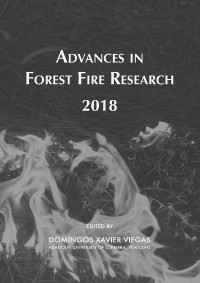Please use this identifier to cite or link to this item:
https://hdl.handle.net/10316.2/44647| DC Field | Value | Language |
|---|---|---|
| dc.contributor.author | Mitri, George | |
| dc.contributor.author | Bechara, Joseph | |
| dc.contributor.author | Nehme, Maya | |
| dc.date.accessioned | 2018-11-10T19:27:52Z | |
| dc.date.accessioned | 2020-09-06T17:30:47Z | - |
| dc.date.available | 2018-11-10T19:27:52Z | |
| dc.date.available | 2020-09-06T17:30:47Z | - |
| dc.date.issued | 2018 | - |
| dc.identifier.isbn | 978-989-26-16-506 (PDF) | |
| dc.identifier.uri | https://hdl.handle.net/10316.2/44647 | - |
| dc.description.abstract | Assessing and evaluating socio-economic perceptions of fire risk and impact can help in the design and development of proper fire risk management and planning. This work aimed at assessing public perception of socio-economic impact of wildfires at the level of a fireshed in Lebanon. The specific objectives were to 1) map fire risk at the fireshed level, and 2) investigate the socio-economic perceptions of key local players involved in fire risk management. The methodology of work comprised 1) delineation of the fireshed of Nahr El Kelb, 2) assessment of fire risk and identification of priority villages/towns for intervention, and 3) development of a targeted socio-economic survey. The delineation of the fireshed started by an initial delineation of the watershed using a Digital Elevation Model. Fire risk was assessed as a product of fire hazard and fire vulnerability. A total of three maps were produced, namely fire hazard, fire vulnerability and fire risk. Identification of priority sites included first the calculation of relative area of high fire risk within each cadastral unit. Consequently, a survey on public socio-economic perception of wildfires was implemented by sampling population in the high risk fire areas. The survey results included answers from 80 respondents on public perception of fire risk, fire damage to constructions and infrastructures, and estimation of fire suppression costs. Other results reflected the public perceptions in relation to direct and indirect effects of fire events in the targeted fireshed. Additional analytical work of questionnaire data will allow for the extraction of specific conclusions and the identification of future steps. | eng |
| dc.language.iso | eng | - |
| dc.publisher | Imprensa da Universidade de Coimbra | por |
| dc.relation.ispartof | http://hdl.handle.net/10316.2/44517 | por |
| dc.rights | open access | - |
| dc.subject | Fireshed | eng |
| dc.subject | fire risk | eng |
| dc.subject | socio-economic perception of wildland fires | eng |
| dc.title | Risk assessment and reflections on socio-economic perception of wildfires at the fireshed level | por |
| dc.type | bookPart | por |
| uc.publication.firstPage | 1160 | - |
| uc.publication.lastPage | 1164 | - |
| uc.publication.location | Coimbra | por |
| dc.identifier.doi | 10.14195/978-989-26-16-506_130 | - |
| uc.publication.section | Chapter 6 - Socio Economic Issues | por |
| uc.publication.digCollection | PB | por |
| uc.publication.orderno | 130 | - |
| uc.publication.area | Ciências da Engenharia e Tecnologias | por |
| uc.publication.bookTitle | Advances in forest fire research 2018 | - |
| uc.publication.manifest | https://dl.uc.pt/json/iiif/10316.2/44647/203727/manifest?manifest=/json/iiif/10316.2/44647/203727/manifest | - |
| uc.publication.thumbnail | https://dl.uc.pt/retrieve/11055473 | - |
| uc.publication.parentItemId | 55072 | - |
| uc.itemId | 68726 | - |
| item.grantfulltext | open | - |
| item.fulltext | With Fulltext | - |
| Appears in Collections: | Advances in forest fire research 2018 | |
Files in This Item:
| File | Description | Size | Format | |
|---|---|---|---|---|
| risk_assessment_and_reflections_on_socio-economic_perception.pdf | 795.81 kB | Adobe PDF |  |
Items in DSpace are protected by copyright, with all rights reserved, unless otherwise indicated.
